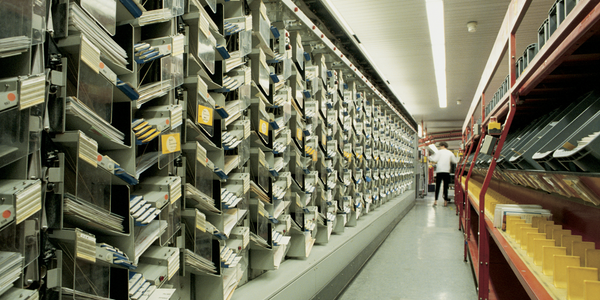Download PDF
Aon Asia: Mitigating Risk with Qlikview for Clearer Presentation of Summary Financial Information
Technology Category
- Analytics & Modeling - Real Time Analytics
Applicable Functions
- Sales & Marketing
Use Cases
- Real-Time Location System (RTLS)
Services
- Data Science Services
The Challenge
Aon Asia’s management needed a clearer picture of the company’s revenue streams, starting with the ability to segment revenue by industry and product. The existing situation made it difficult to gain a true view of the company’s income across different offices in the region or to allocate the correct fees and commissions among their regional directors and country segment heads. Before using QlikView, it was all manual reporting – from regional director to country segment head to country finance. Each step in the chain required someone to manually compile the data and check for errors – a time consuming process involving a lot of following up with different parts of the business. It also lead to the possibility of different versions of data coming from more than one source. The search began for a packaged solution that could automate the process and analyze the financial streams.
About The Customer
In Asia, Aon is the leading provider of risk management services, insurance and reinsurance brokerage, human capital and management consulting. It is part of Aon Corporation, which employs approximately 47,000 professionals in its 500 offices in more than 120 countries. Backed by broad resources, industry knowledge and technical expertise, Aon’s professionals help a wide range of clients develop effective risk management and workforce productivity solutions. Aon Asia’s goal is to become the partner of choice for companies throughout the region. QlikView’s flexible business analysis tools are helping Aon Asia to achieve this by helping to provide consistent information and reporting to improve Aon’s financial performance and provide a better service to clients.
The Solution
Aon Asia had a challenge to find a good tool that could meet their needs. According to Glen Francis, the regional Project Manager for this initiative, cost and ease of use– the latter not only for the user interface and the former for ongoing support and maintenance of the applications – were extremely important. Aon Asia had only 3 employees supporting the 12 countries in the region with one other employee dedicating half of his time to the project. “We needed to find something other than traditional OLAP tools, which require a lot of internal and external resources to implement, deploy and support.” Glen was introduced to QlikView by a local reseller. They came in to do a presentation, and Tom Gill, regional CIO, and the rest of the team were soon impressed with the product. Aon Asia began a trial period. “We needed to develop a ‘show and tell’ demo for the management team, and the vendor was great in working with us to achieve this,” said Glen. Keith Edmonds, regional manager and their architect for the data warehouse built an application to analyze revenue across a number of dimensions: by region, local office and servicer (account representative); by product line; by industry; and by client type (new or existing client). The team demonstrated this application prototype during their annual regional CFO/CIO conference and later to the Chairman himself. When they showed the revenue detail by client, their then Chairman and CEO for Asia Pacific said, “This is the information I’ve wanted for the past 10 years.” The project gained immediate approval.
Operational Impact
Quantitative Benefit
Related Case Studies.

Case Study
Leading Tools Manufacturer Transforms Operations with IoT
Stanley Black & Decker required transparency of real-time overall equipment effectiveness and line productivity to reduce production line change over time.The goal was to to improve production to schedule, reduce actual labor costs and understanding the effects of shift changes and resource shifts from line to line.

Case Study
Jaguar Land Rover Speeds Order-to-Cash Cycle
At Jaguar Land Rover, vehicles physically move around the facility for testing, configuration setting, rework and rectification, leading to a longer search time to get each vehicle to its next process facility. The main goal is to minimize the vehicles' dwell time between end of line and the delivery chain which was previously a manually intensive process. Jaguar Land Rover's goal was to build on the success of an earlier RFID project and improve the efficiency of delivering vehicles to meet dealer orders.

Case Study
Improve Postal Mail and Package Delivery Company Efficiency and Service
Postal mail and package delivery company wanted to replace legacy yard management system, increase inbound and outbound yard velocity, improve priority parcel delivery time and accuracy, reduce workload and overtime, reduce driver detention and measure performance and utilization of yard resources.

Case Study
Hospital Management Solution
The Oncology Diagnosis and Treatment Center of Brasov wanted to give patients as much freedom to roam as possible, while at the same time ensuring optimal patient safety and security. The centre was in need of an adequate wireless voice communication and messaging solution that would give patients the confi dence that medical staff is always on call, and reduce stress levels of nurses and doctors when called in case of urgent need.
Case Study
Worker Tracking & Safety Monitoring in Construction
One of the main challenges facing the technology was to create a network within underground tunnels and another was to provide products that can withstand harsh working environment. The team used amplifiers to enhance bandwidth and Litum produced IP67-rated hardware that is durable for harsh working conditions.

Case Study
Samsonite Track&Go
Travellers spend their lives discovering new places and meeting new people from all around the world. It can be such a wonderful experience, but sometimes it can turn into a disaster when your luggage gets lost. In 2014 alone, more than 24 million pieces of baggage were lost. Fortunately, 95% of them were found and returned to their owners. However, that leaves more than 1 million items of baggage that have never been recovered.





